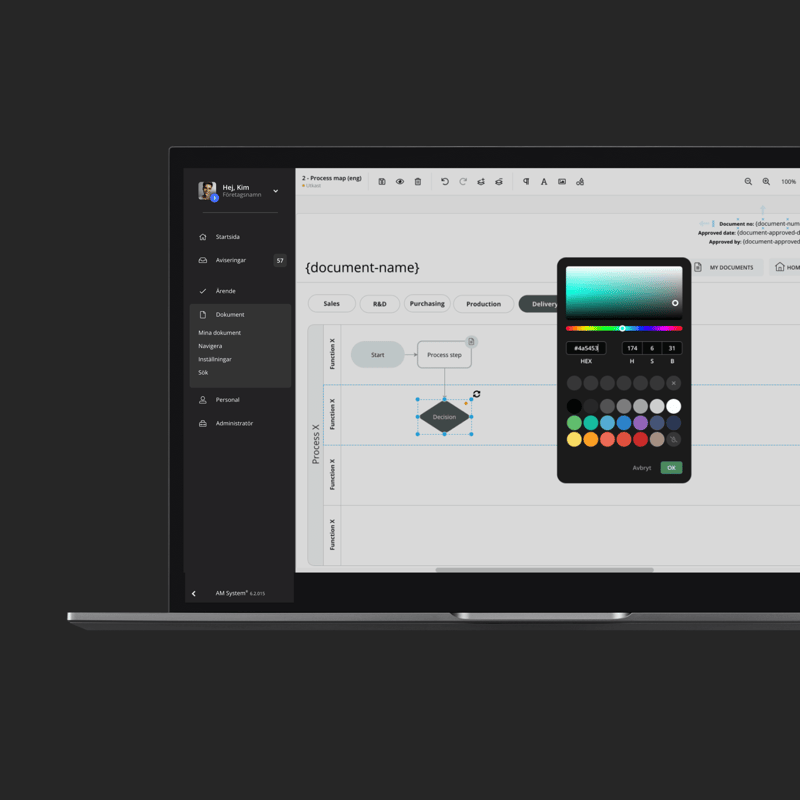Article
From risk analysis to action: moving from insight to action
-
 Editorial team
Editorial team
-
- Case Management
- 2 min reading

Identifying risks is an important first step, but it is the actions that really make a difference. For the risk analysis to have a practical impact, the organization needs to translate the analysis into concrete and feasible actions that eliminate or minimize the risks. Here's how you can take your risk analysis further and create an actionable strategy.
1. Prioritize the risks
Not all risks are equally serious or likely. Therefore, it is important to start by prioritizing which risks should be addressed first. This prioritization can be done using a risk matrix where you assess each risk:
- Likelihood: How likely is it that the risk will occur?
- Consequence: How much impact would the risk have if it materialized?
- Detectability: How easy is it to identify the problem before it causes harm?
Example: If a risk has a high probability and serious consequences, such as a fire in a factory, it should be prioritized higher than a risk with a low probability and less serious consequences, such as a temporary delay in delivery. Using a systematic approach to prioritization helps the organization to focus resources where they make the most difference.
2. design measures to manage the risks
Once the prioritization is complete, the next step is to design actions to manage the risks. Actions should be specific, feasible and cost-effective. Here are some types of measures that may be relevant:
- Preventive measures: Reduce the likelihood of the risk occurring. Example: Introduce regular maintenance of machinery to reduce the risk of downtime.
- Mitigation measures: Reduce the consequences should the risk occur. Example: Installing fire extinguishers and training staff in fire safety to limit the damage in the event of a fire.
- Control measures: Improve the ability to detect risks early. Example: Implement monitoring systems that alert on process deviations.
Involving the right people is an important part of the design. Cross-functional teams can bring different perspectives and expertise, increasing the chances of creating effective and comprehensive measures.
3. implement the measures
Once the actions are defined, it is time to implement them in the business. This step requires planning and communication to ensure that everyone involved understands their roles and responsibilities.
- Training and information: Make sure employees are aware of the new measures and know how to use them. Example: If new security procedures are introduced, train staff on how to apply them.
- Resource allocation: Ensure that sufficient resources, both in terms of time and money, are allocated to the implementation.
- Clear accountability: Designate responsible persons to monitor implementation and report progress.
Implementation should be gradual and thorough, especially in the case of major changes. Regular check-ins can ensure that work is progressing according to plan and that any obstacles are addressed in time.
4. Monitor and improve
Risk management is a continuous process, not a one-off action. After the measures have been implemented, it is crucial to monitor their effectiveness and make adjustments if necessary.
- Evaluate effectiveness: Analyze whether the measures have had the desired effect. Example: Has the number of incidents decreased since the new security procedures were introduced?
- Follow up regularly: Risks and operating conditions change over time, making it necessary to regularly update risk analyses. This can be done through quarterly or annual reviews.
- Learn from experience: Document what worked well and what can be improved. Use these insights to improve future risk management efforts.
Example: A company that implemented a new fire protection plan evaluated its effectiveness after one year and discovered that some of the smoke alarms were not working as expected. By fixing the problem, they were able to ensure that the system was fully functional for the future.
Summary: From insight to action
Risk analysis is valuable, but it is only when the analysis leads to concrete and well-implemented actions that the organization is truly protected against uncertainties. By prioritizing risks, designing thoughtful actions, implementing them effectively, and monitoring results, you create a robust risk management process.
This structure will help your organization not only address today's challenges but also be better prepared for tomorrow's risks. With a systematic and long-term focus on risk management, you can strengthen the stability and success of your business.
Get a demo
Ready to make work easier - and more enjoyable?
Want to see for yourself how AM System can make a difference for you? Book a demo and discover how easy it is to create structure, efficiency, and seamless workflows in your daily operations.
